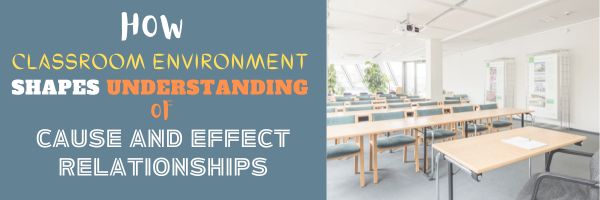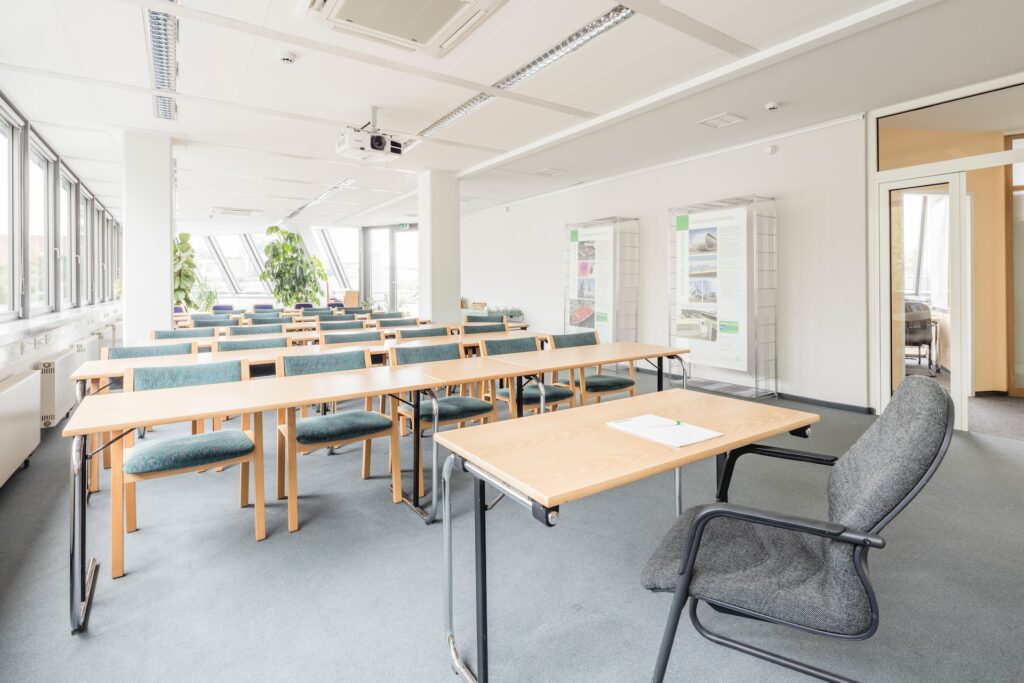How do teaching methods influence understanding? What can you do to make things work better in the classroom with simple fixes? Find the answers here.
How The Classroom Environment Shapes Understanding of Cause and Effect Relationships
Mastering cause-and-effect relationships in research is crucial for a student’s academic future and career. Having this knowledge, it would be easier to deal with assignments, homework, and life issues. But what role does the classroom environment play in this understanding? Read on to find out.
Teaching Methods and Learning Tools
Learning environment in the classroom can influence perception and comprehension on many levels. Here are a few examples of how different methods can enhance cause-and-effect skills.
Reading and Analyzing
Overall comprehension improves when students realize that most texts are structured according to cause-and-effect relationships. Motive is the story’s central power. It’s the driving force behind all events. It is the thing that triggers subsequent events. University professors must emphasize this fact.
This way, college kids might get closer to understanding how to write cause and effect essay. In an argumentative essay, the cause-and-effect lays forth the chain of events that led to the current state of affairs. Academic papers follow a format where the author demonstrates the causal relationship between two entities. Finding inspiration in cause and effect essay ideas lists on the Internet is a way out if you feel stuck. Everyone knows that feeling when the cursor blinks, and words just don’t come out. Learning from other authors’ experiences is always beneficial. Furthermore, one may ask for professional help if they didn’t get enough assistance in class or need an example of a perfect paper.
The word “effect” means the final consequence. The “cause” refers to the reason something occurred, whereas the effect describes the result. Students often grasp the idea of these interactions quickly because they are so pervasive in our daily lives.
Gaming to Captivate the Class
Students’ memory is substantially improved when they are provided opportunities to take an active role in the learning process. Using common, real-world examples improves the ability to make connections and understand ideas. Playing games is one-way students show their understanding of cause and effect.
Example. The instructor employs sentence strips to create a variety of matched causes and effects. A student is given a strip and must work to determine which among them is the cause or effect. By switching around the order of the strips, the game may be played repeatedly.
Having students generate their cause-and-effect sentences opens up a number of opportunities for expansion and improvement. Give them a reason for doing something and see what repercussions they come up with.
Make Use of Visual Aids and Science Facts
Create potential triggers for real-world occurrences and have student groups utilize graphic organizers to brainstorm potential outcomes. A teacher usually shows students examples. And later, they create their own graphic organizers for personal use.
The goal of scientific research is to shed light on the mysteries of nature. For instance, erosion and volcanic eruptions have their roots in certain causes. Many mysteries are resolved by learning about and teaching cause and effect. It’s the basis of the scientific process, which is how we figure out whether or not an effect follows from a cause.
We are living in times when technologies change education every day. According to Statista, in a study taken in 2022, 47% of college students believed that online learning in higher education was on par with in-person instruction in the US. Ask the students what they think led to this state of affairs. It will be an excellent exercise.
Anchor Diagrams and Word Hints Benefits
Making an anchor chart to introduce the idea of cause and effect is a great way to help students remember it. It’s a handy technique to keep track of relevant data for later review or independent study.
In order to help readers identify the links between causes and effects, authors often utilize key phrases. Using the words because or so with comments that explain the topic is a simple method to aid students. Both words represent a causal connection between the sentences on each side of the word.
Some Insights for College Educators
By breaking down a huge issue into its constituent parts, you solve it more efficiently using a cause-and-effect analysis. This makes it simpler to start fixing the problematic areas and raising performance.
Sometimes it’s hard to tell what came first, the cause or the consequence. However, analyzing the situation regarding cause and consequence might help you overcome your helplessness. We may learn more about what will happen in the present circumstances if we analyze comparable instances in which we have succeeded. But having all the benefits in mind, it’s crucial not to fall into false causality.
Conclusion
Real-world social issues are best tackled by those who see the connections between events and their causes and consequences. The capacity to foresee potential outcomes, both good and bad, in social interactions follows naturally from an understanding of cause and effect. An enabling classroom environment does much for students in this regard. We hope that the examples from this article help understand why is classroom environment important and show teachers ways to improve the effectiveness of teaching students.
–photo credit M. Monk on Unsplash and CX Insight at Unsplash
Here’s the sign-up link if the image above doesn’t work:
Jacqui Murray has been teaching K-18 technology for 30 years. She is the editor/author of over a hundred tech ed resources including a K-12 technology curriculum, K-8 keyboard curriculum, K-8 Digital Citizenship curriculum. She is an adjunct professor in tech ed, Master Teacher, webmaster for four blogs, an Amazon Vine Voice, CSTA presentation reviewer, freelance journalist on tech ed topics, contributor to NEA Today, and author of the tech thrillers, To Hunt a Sub and Twenty-four Days. You can find her resources at Structured Learning.








































Reading this article about how the classroom environment influences our perception of cause and effect relationships was truly enlightening. As someone who has always been fascinated by the psychology of learning, this piece resonated deeply with me and shed light on the intricate ways our surroundings impact our cognitive processes.
What struck me even more was the concept of integrating real-world examples into education. It’s incredible how something as practical as the operations of the SSA office in Dover can be woven into lessons to illustrate cause and effect. This not only makes learning relatable but also helps students grasp complex concepts with ease. It’s as if the classroom extends beyond the walls, connecting theoretical ideas to tangible experiences.
This article has not only broadened my perspective on effective teaching methods but also made me realize how even seemingly unrelated subjects can be connected to enhance understanding. Thank you for sharing this insightful piece! I’m eagerly anticipating more thought-provoking content from you in the future.
I love this point of view! I am currently learning about elementary education, and something we have done a deep-dive on is the environment we create. The energy we bring into the classroom is definitely something students are affected by.